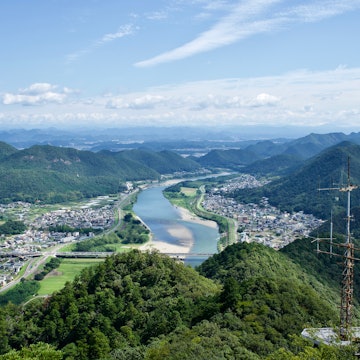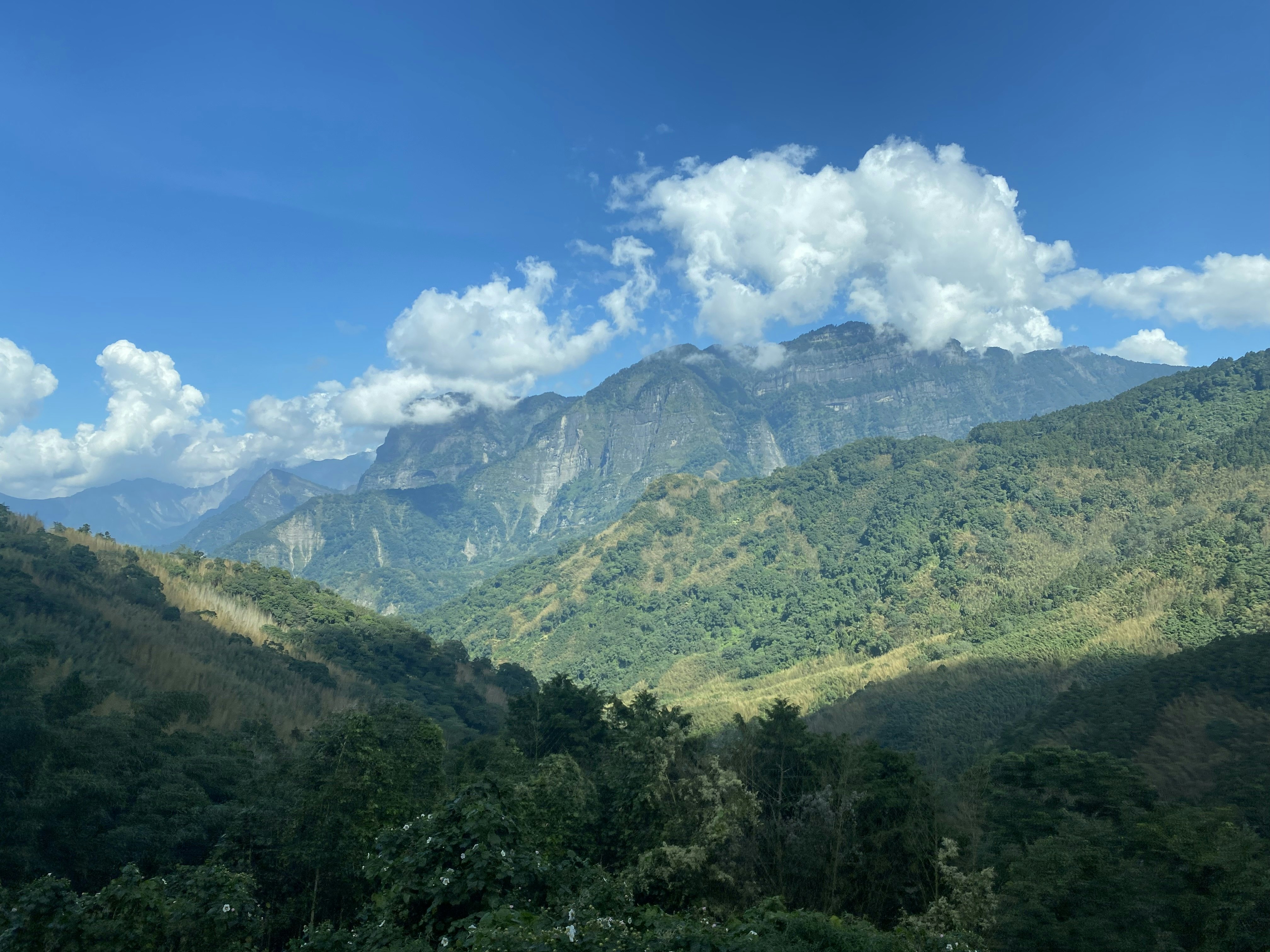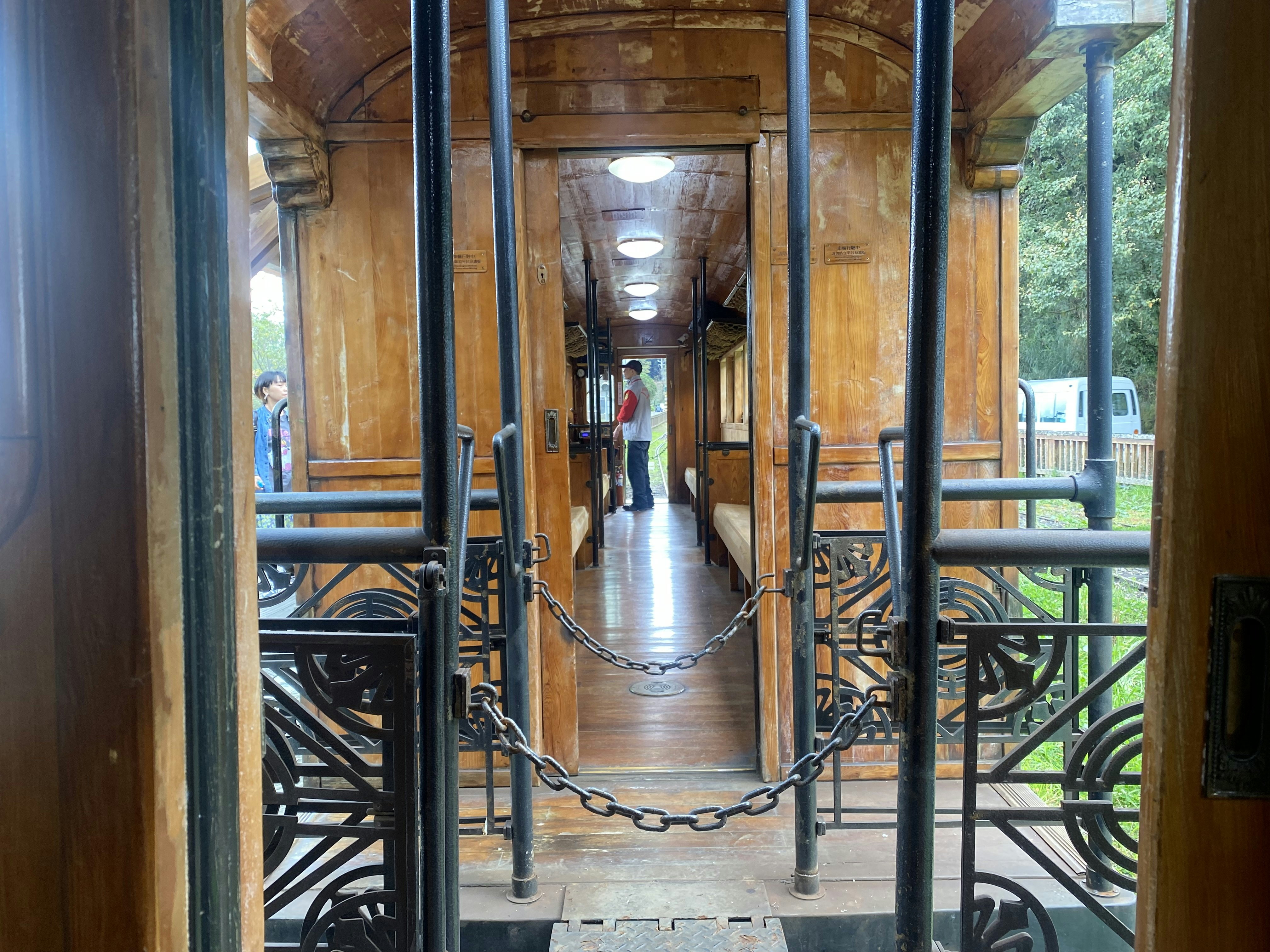

Gleaming red diesel engines propel a train of historic wooden carriages through Alishan Forest Recreation Area © Sean3810 / Getty Images
Our slow travel series explores how you can take more mindful journeys by train, boat, bus, or bike – with tips on how to reach your destination without flying, and what to see and do along the way. Here, we join Lonely Planet contributor Brian Healy on the 112-year-old Alishan Forest Railway in Taiwan following its recent makeover.
What makes a misty mountaintop forest even more magical? The train ride to get there.
Climbing some 7000ft over three (long!) hours, the narrow-gauge Alishan Forest Railway in Western Taiwan has long attracted rail enthusiasts.
Built by the occupying Japanese in 1912 as a way to bring timber down to Taiwan’s densely populated west coast and ship to elsewhere in Asia, the undersized cars pass through 50 tunnels and across 77 bridges as they wind their way up to a dense area of old-growth trees.

From timber to tourism
Originally populated by the Indigenous Tsou people, this lush, high-altitude region has groves of Taiwania conifers, Formosa cypress, Douglas fir and other prized tree specimens. Together they make up the Alishan Forest Recreation Area.
Offering visitors relief from the sweltering coast, the railway faced closure on multiple occasions as the timber industry withered as Taiwan industrialized after WWII. Fortunately, rail enthusiasts rallied to save the route – and today, it exists as a delightful, eccentric jewel in Taiwan’s nationwide train network.

With Z-shaped switchbacks and looping tunnels, the railway is a marvel – or perhaps a folly – of engineering. Schematic renderings of the route look like geometric spaghetti.
Trains depart from Chiayi and scrubby green woods give way to staggering vistas of the plains as the train banks around an escarpment. Clattering over trestles, negotiating curves, passing through tunnel after tunnel (is this one the third or the twelfth?), the train makes its way slowly, inexorably, and almost imperceptibly, upward.
Shortly before Shizilu station, the spectacular rock face of Mt Daito (also called Mt Ta) appears – reminding passengers that the diminutive carriages have already traveled up some 5000ft (1500m). Only 2000ft (610m) more to go.

Keep an eye out for the narrowest tracks
The railway originates from the main station of Chiayi, a regional city whose bustling side streets and night markets are well worth exploring. Uniformed rangers at a dedicated window hand passengers their tickets (reserving online in advance is essential). You then follow well-marked signs to a separate platform where the tracks are visibly narrower than those on the main line a few feet away.
A beautifully painted, candy-apple-red diesel engine pushes the carriages, which have received retrofits. They now include air conditioning and new seats in a two-and-two configuration. However, you can still see their age in details like the heavy-metal hardware and an abandoned panel of switches and knobs that once controlled the cabin. The full-train intercom system is a less welcome upgrade. The conductor provides commentary for almost the entire ride, mostly in Mandarin.
We chug through Chiayi at street level. Dozens of motorbikes wait as we pass each grade crossing. The rear balconies of the city''s apartment blocks abut the track as we continue through the city's periphery. Finally, potato fields and groves of betel-nut palms appear.
The train calls at several sleepy stations before the climb begins. At 330m (1083ft), views of the hazy coastal plain below start to open up. The conductor informs us the track now reaches an astonishing 5% gradient at certain points. Hikers disembark at remote Dulishan station. I wonder if they are walking back to Chiayi on foot. The train continues its serpentine ascent. Due to typhoon damage, Shizilu – several kilometers short of the forest proper – is the uppermost stop on the line for now. A bus takes us to the reserve entrance via several switchbacks. Authorities expect to finish restoring the line soon.

A short ride further up to a slow walk through the woods
Entering the park on foot, my husband and I hustle past the coach-choked visitor center and shopping plaza to Alishan train station, which will soon be the railway terminus again. It's a gleaming timber-beam structure that would hold its own against any depot in the Swiss Alps that offers passengers a bonus journey: a seven-minute jaunt up further to Zhaoping.
Fashioned from local (now endangered) Taiwanese cypress, the antique carriages have been lovingly restored. Their interiors give off a faint, pleasant smell of sanded wood and linseed oil. The cars creak and groan through open windows as the train navigates the short, very curvy final stretch. The bullet train sure doesn’t sound like this.
A few steps from Zhaoping station, we’re surrounded by huge trees that stretch up into the clouds. We walk a little further to get off of the main circuit. Suddenly, we have the forest to ourselves. We start up the Tashan Trail and tackle a few hundred of its thousands of steps before we meet the winding railway track once again. We then follow the smoothly graded track part of the way back down to Alishan station.
The ambiance of the verdant forest provides a surprising serenity. The active seniors, birdwatchers, schoolchildren and a few fellow foreigners we encounter are as engrossed by nature as we are – and all it took was a 111-year-old railway to the clouds.

A closer look at the equipment
Back in Chiayi the next day, we head to Alishan Forest Railway Garage Park, next to the depot that keeps the active rolling stock shipshape. It has vintage steam locomotives and carriages on permanent display. The leafy setting, the impressive and diminutive equipment, and the locomotive turntable make the scene as close to the TV show Thomas the Tank Engine as you can get in the real world.
I hear the signal bell activate and see the crossing gate lower as the morning departure sets out for its daily climb. I wave to the passengers as the train trundles by, wondering if they know what awaits them up there in the clouds.

How to make it happen
The Alishan Forest Railway departs from Chiayi station every day at 9 am. There are two supplemental departures on weekends (at 8:30 am and 9:30 am.
As track-restoration work continues, outbound trains terminate at either Shizliu or Fenqihu stations. From there, you need to continue to Alishan Forest Recreation Area by bus. The return trip departs Shizliu at 1:50 pm. A one-way adult fare costs about US$15; tickets go on sale two weeks before departure and sell out quickly. Book ahead.
Within the park, branch lines featuring vintage carriages depart frequently from Alishan station to Shenmu and Zhaoping (US$3.25; no reservations necessary). One train a day leaves from Alishan station to the famous sunrise-viewing platform at Zhushan, timed to arrive just before daybreak (tickets US$4.75; reservations highly advised).














